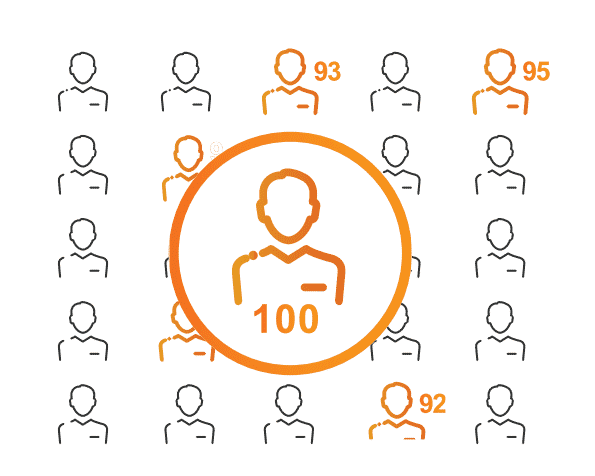In order to drive strategic growth for your business, a solid customer acquisition strategy is crucial. But the challenges with creating an effective strategy are growing. While you’re challenged with adapting to the ever-changing shopper journey, marketing budgets are continually being stretched thin. Not to mention keeping up with the latest technologies and your competitors.
According to a recent Gartner survey, marketing spend has become heavily skewed toward retention, with these budgets representing two thirds of marketers’ total investments [1]. But if new customer acquisition is a key component to driving strategic growth, why have marketers only been putting a third of their budget towards it?
You’ve wasted too much money talking to the wrong people.
You might know who your target customer is like the back of your hand. You might base that on what you believe are their wants, needs, and interests. But actually finding this person is like trying to find a needle in a haystack. A haystack filled with millions of other needles that might look like the one you’re looking for.
Based on a recent Criteo survey, close to 70% of global marketers feel that identifying shoppers truly interested in their products is very challenging [2]. Much of this boils down to the technologies or partners that you’ve been using so far, and their ability to help you identify and qualify potential customers. Let’s explore the two main types of companies you may be working with, and the challenges you’re likely facing:
Working with the internet giants
These companies help you find new audiences that spend time within their ecosystem. They give you access to user data, including demographic and interest data, so you can test various segments and optimization techniques. You may be constantly experimenting with different audiences and campaigns, and then deciding how to invest. If your goal is to increase brand awareness, these solutions are fine for reaching a wide range of potential customers.
But, if you’re looking to drive sales from brand new customers, this strategy is flawed. The problem is that these types of campaigns don’t focus on high-value shoppers. For example, someone who typically likes various luxury brands’ fan pages on social media might not necessarily have any intention of purchasing from them. As a result, you end up wasting money on a lot of people who have no interest in buying from you.
Working with demand-side platforms
Other companies help you identify potential customers across the web through their network of data providers, piecing together shoppers’ identity and browsing history. To deliver against your ROI goals, they focus on delivering compelling messages and optimizing things like costs and ad frequency. However, they don’t have the ability to uncover the highest quality audiences to target. It doesn’t matter how powerful your messages are or what you pay to deliver these messages. If you’re not reaching the right people, then you’re leaving money on the table. This is one of the main reasons for the heavy shift in budgets away from some high-cost acquisition tactics.
Identifying the most valuable prospects requires automation and machine learning. As shopper behavior constantly evolves, a holistic, real-time view of their journey is crucial. Without this, inaccurate assumptions are made about their value, resulting in missed opportunities to engage with prospects and ultimately missed revenue targets.
Finding the needle in a haystack is impossible to do without the right technology. Criteo Customer Acquisition goes far beyond inaccurate audience data, generic demographics, and broad behavioral data, to automatically uncover high-value prospects. Avoid wasting money on people who aren’t likely to convert.
[1] CMO Spend Survey 2017-2018: Budgets Recede Amid Demand for Results, Gartner 2017
[2] Criteo Customer Acquisition survey (UK, US, FR, DE, BR), July 2017






















